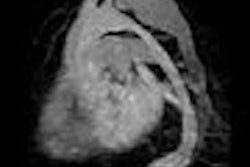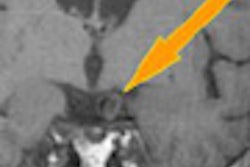A coalition of European MRI advocates won a partial victory in June in its fight against new safety regulations that some believe will effectively shut down the use of MRI across the European Union. But the Alliance for MRI, led by the European Society of Radiology (ESR) of Vienna, faces additional struggle in winning a permanent injunction against implementation of the rules.
The alliance is a coalition of 23 members of the European Parliament (MEPs), patient groups, and medical societies formed to prevent the implementation of the E.U. Physical Agents 2004/40/EC Directive, also known as the EMF (electromagnetic field) Directive. They are seeking a "derogation," or a permanent amendment, protecting MRI in the new regulations.
|
HSE ICNIRP IEEE MCL-T MEP 2004/40/EC |
Originally passed to improve worker safety, the directive quickly became a textbook example of the law of unintended consequences. The directive includes regulations on exposure to magnetic fields that opponents believe are so restrictive that nearly half a million MR exams in Europe could no longer be performed, specifically those that required MR staff to be in the room during scanning. Approximately 8 million general MR exams are performed in the E.U. each year, and those too could be affected, according to the alliance.
Radiology organizations were not consulted before the regulations were written, noted Dr. Gabriel Krestin, professor of radiology at Erasmus Medical Center in Rotterdam, Netherlands. Krestin is the ESR's representative to the alliance.
During a June 13 luncheon in Brussels at the European Parliament, E.U. officials -- including commissioner Vladimir Spidla, MEP responsible for employment, social affairs and equal opportunity -- and the Alliance for MRI agreed on the need to develop reasonable worker safety regulations.
That same day, the official publication of a report by Stuart Crozier, Ph.D., of Brisbane University, in Brisbane, Australia, gave the alliance much needed ammunition in the form of scientific evidence that the directive's regulations on MRI were too stringent. Commissioned by the U.K.'s Health and Safety Executive, Crozier's report contains some of the first published data on occupational exposure to magnetic fields from MR systems.
"The meeting on June 13 was very effective from three points of view," Krestin told AuntMinnie.com. "We had the opportunity to inform quite a large number of MEPs about the situation. Also the timing, as it was the day when the results of the Crozier report became officially available. And Commissioner Spidla made a clear statement acknowledging that if the very stringent regulations pose a problem with the use of MRI, then the commission would be supportive of an amendment of the directive."
Uncertain future
While the Alliance for MRI welcomes the delay in implementation and the recognition of the need for an amendment, hospitals and research facilities still face uncertainties about the future of MRI in Europe. The directive itself cannot be scrapped, as it covers far more than MRI worker safety.
For many of the other industries and applications included in the directive, the effects are not as clearly damaging as they are with MRI. Unfortunately, the radiology community became aware of the problem only after the directive had passed the European Parliament.
"When we had our first meeting with Commissioner Spidla in 2006, shortly after the ECR (conference), he told us he wanted to have very clear scientific evidence that the exposure limit values are definitely proven to be exceeded with the use of MRI," Krestin said. "Although we had the theoretical background that these values were incorrect, the real, practical proof became officially available on June 13."
The Crozier report encompassed both computer modeling and actual measurement of personnel exposure using dedicated magnetic resonance dosimeters. Researchers had not previously established the impact on health of static fields. However, the World Health Organization published a monograph on the topic last year, and the International Committee on Non-Ionizing Radiation Protection (ICNIRP) will probably use the monograph in its expected revisions to guidelines on static field exposure, due by the end of 2007.
In Crozier's report, the three main computer model studies focused on the following:
- Static and switched-gradient magnetic fields from 1.5-, 4-, and 7-tesla systems
- Induced current densities and internal electrical field strengths arising from motion through static-field spatial gradients
- Induced current densities and internal electrical field strengths from time-varying switched-gradient fields
The report also discusses the results from personal dosimeter readings of MR personnel to static and switched-gradient fields during 30 working shifts at three MR facilities. Crozier used the dosimeter readings to compare calculated field distributions and gradients around the MR systems with the actual corresponding values, and to provide information on how much magnetic field exposure MR staff encountered during routine work.
According to an ESR position paper published in July 2007, the results of the report demonstrated that within 1 meter or so of the boundary of the three different types of MR systems studied, the exposure limit values of the EMF Directive could be exceeded by the switched-gradient fields.
Healthcare staff would not be able to attend to the elderly, children, anesthetized patients, or others who need care during MR procedures. Some patients would be forced to undergo other imaging procedures -- CT, for example -- instead. Interventional MRI would be eliminated, and MR research would be significantly threatened.
Moreover, the directive's regulations regarding static field exposure would essentially shut down the use of MR in the entire E.U. Crozier observed that within a meter or so of the ends of the three MR systems studied, guidelines for occupational exposure could be exceeded by movement through the static field and that faster movement would exacerbate the exposure.
Armed with the Crozier report, the Alliance for MRI is convinced it will prevail in its derogation drive, or at the very least have the limit values modified to reflect scientific evidence. ICNIRP will be discussing the directive at an upcoming international workshop on medical management of occupational EMF health risks, to be held October 4-6 in Reggio Emilia, Italy.
In its announcement for the meeting, ICNIRP noted that "modest effort has been devoted to the development of adequate criteria for an effective medical management of the occupational EMF risks. The lack of definite criteria is a problem particularly in Europe, where the new directive on the protection of workers from the risks arising from EMFs is under implementation."
Implementation of the regulations as currently written would be a disaster for healthcare in the E.U., Krestin noted.
"If this international law becomes enforced and MRI stops, the next day patients would be marching in the streets and there would be a huge riot," he said. "Medical imaging without MRI would set us back 30 years."
MEPs supportive of the alliance have become increasingly outspoken about the directive's risks to medical care in the E.U.
"While there are positive aspects to this proposal (the directive), it must be halted in its current form until an existing European Commission impact assessment has been completed," said British MEP Liz Lynne. "A delay will give us enough time to digest the results of the Crozier report and the upcoming impact assessment and amend this legislation, providing for special allowances for MRI procedures, which have now been safely in use for 25 years."
Despite concerns about the directive, two major biomedical imaging centers were launched in June, the Centre for Biomedical Imaging in Lausanne, Switzerland, and GlaxoSmithKline's $100 million Clinical Imaging Center at Imperial College in London. The Swiss center includes a 14-tesla MR scanner, believed to be the world's most powerful, and the British center will include MRI for both research and clinical purposes.
By Brenda Tilke
AuntMinnie.com contributing writer
July 26, 2007
Related Reading
Scientists warn new E.U. rules threaten MRI scans, June 11, 2007
European radiology mobilizes to stave off MRI safety rules, March 9, 2007
New E.U. rules threaten MRI research, use - experts, September 21, 2005
Copyright © 2007 AuntMinnie.com



.fFmgij6Hin.png?auto=compress%2Cformat&fit=crop&h=100&q=70&w=100)




.fFmgij6Hin.png?auto=compress%2Cformat&fit=crop&h=167&q=70&w=250)











